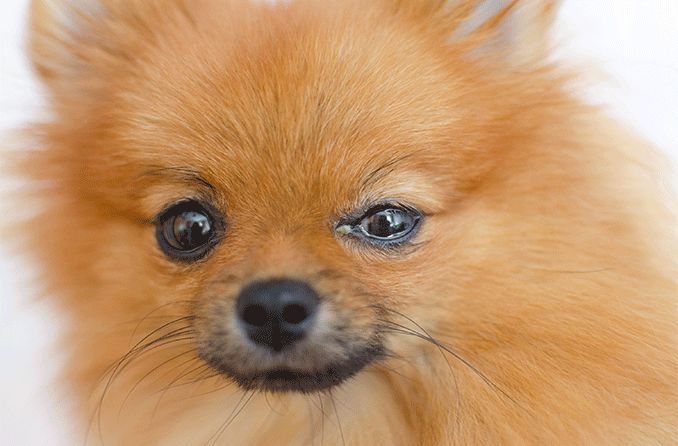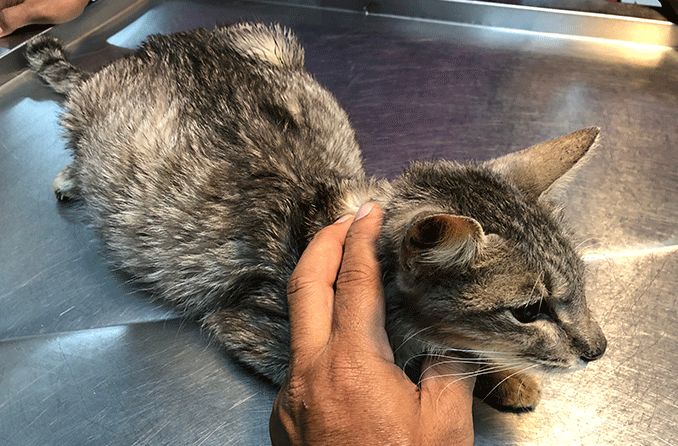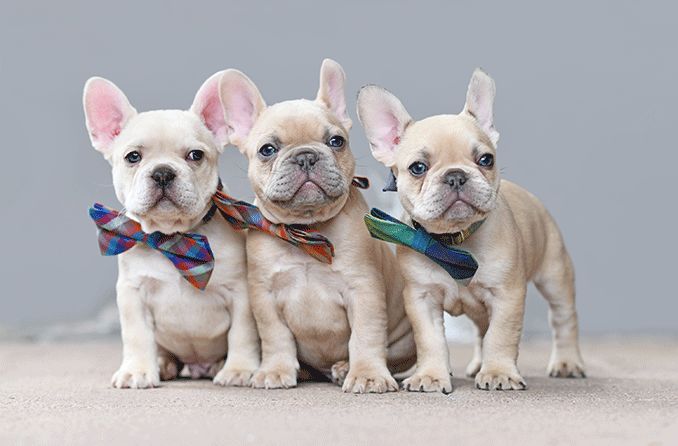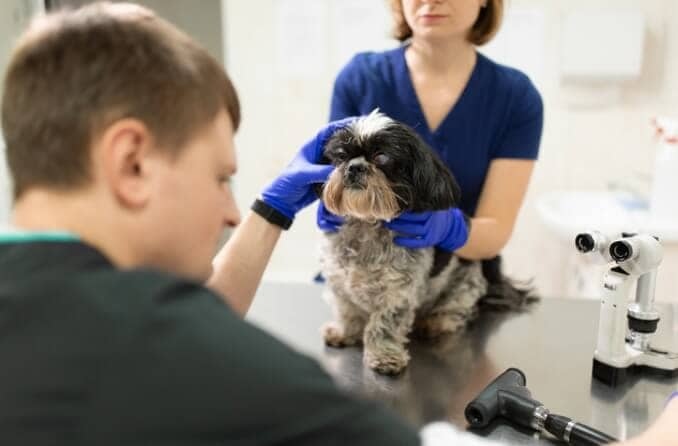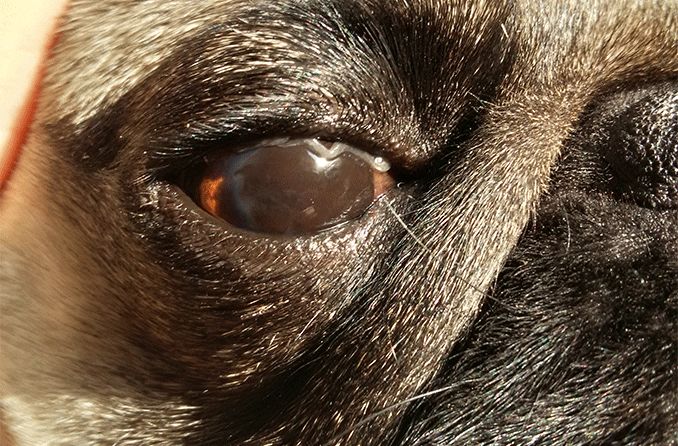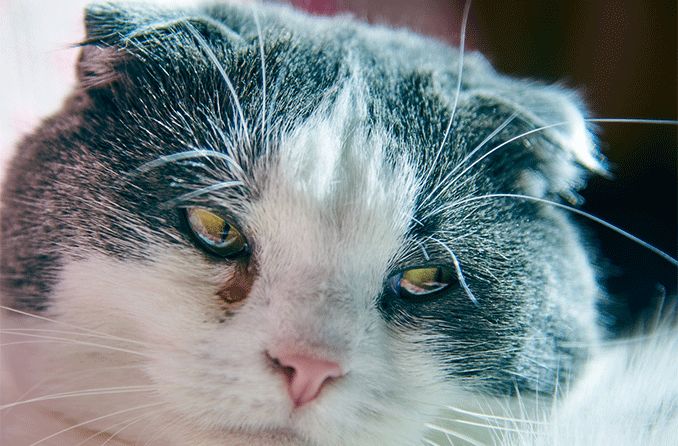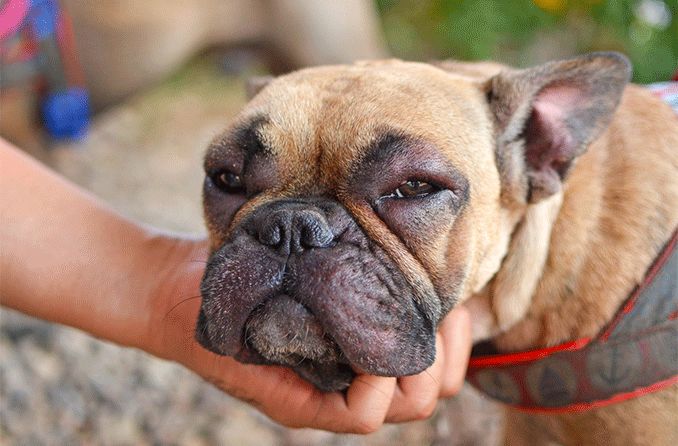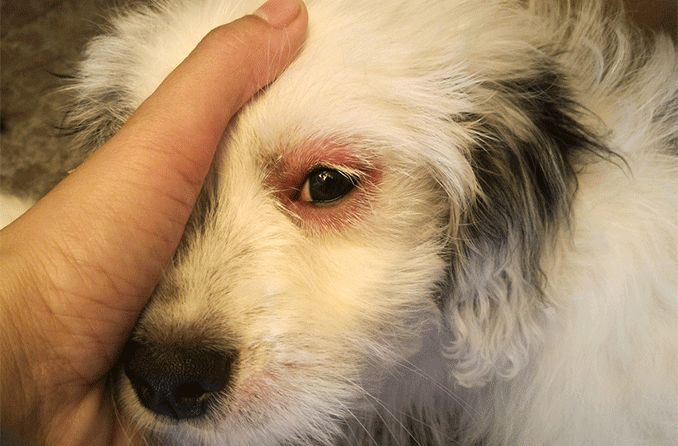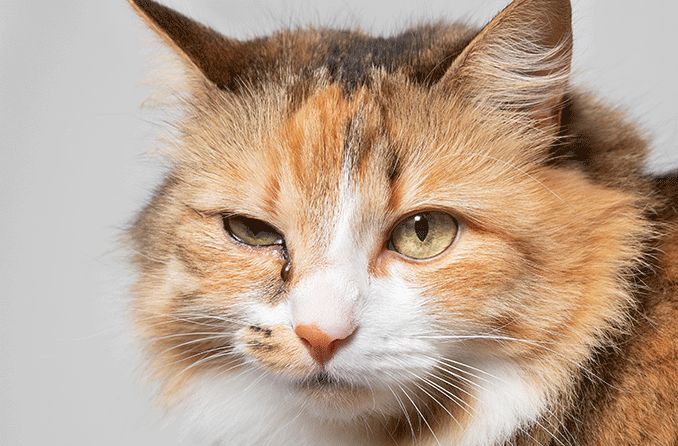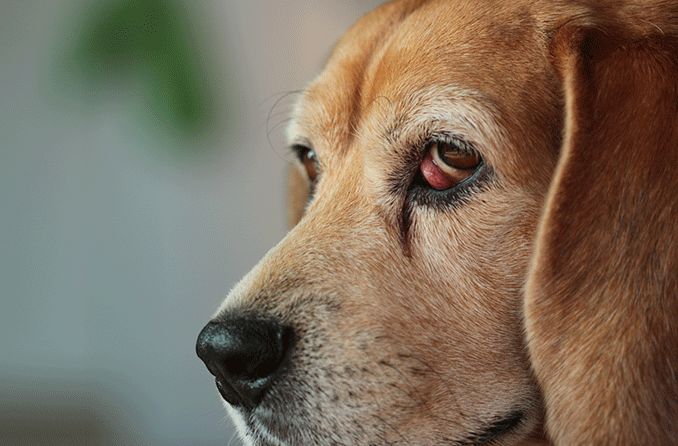Some eye discharge (also called ocular discharge) is normal in dogs — particularly watery and clear mucus or a small amount of greenish mucus in the inside corner of the eyes. It is also normal for dogs to have discharge that has dried and crusted over in the corner of the eye on a regular basis, especially during periods of dry, windy weather. This can usually be taken care of by wiping the area clean with a clean towel or warm, damp washcloth.
However, if discharge appears especially thick in texture, pus-like or turns yellow or green, it is best to contact a veterinarian in case an infection or serious condition is present, especially if the tissue around the eye (the conjunctiva) or the white part of the eye (the sclera) appears to be swollen or inflamed. Treatment may vary for each case, but it is typically manageable at home.
Types of eye discharge in dogs
Eye discharge in dogs can vary in color and texture, depending on what’s causing it. Here are a few types of eye discharge and what each could mean for your dog:
- Watery and clear discharge that may crust over: If in small amounts, this is normal.
- Yellow discharge: Infection may be present.
- Green discharge: Infection may be present.
- White or gray eye discharge: Dry eye may be present.
- Bloody discharge: See your veterinarian as soon as possible — this may be the sign of a serious or even life-threatening condition.
Tear stains
If you have a dog with lighter-colored fur, the area around their eyes may appear to have a reddish-brown discharge due to tear staining. This is typically nothing to worry about medically, though it may be a cosmetic concern for some.
Keeping the eyes clean with a damp washcloth or paper towel can reduce the appearance of tear stains, and trimming the fur around the eyes can also improve it. If your dog develops redness or pain around the area, or if tearing becomes excessive, contact a veterinarian for more information.
SEE RELATED: What different eye discharge colors mean
Causes of ocular discharge in dogs
Infections, allergies and dry eyes are a few examples of what may be causing your dog’s eyes to water or produce discharge.
Dry eyes
Dry eyes (also called keratoconjunctivitis sicca or KCS) do not produce enough tears, which in turn can cause the eyes to become inflamed and produce a sticky discharge or mucus. KCS can be diagnosed with a simple test that is available in most veterinary clinics, and it is often treated with lubricating eye drops.
However, severe cases can lead to infection, permanent damage and even vision loss, so it’s always important to receive attention from a veterinarian as soon as possible.
Injury or foreign object
If a foreign object such as dirt or debris enters the eye, or if the eye is injured during playtime, the eye may begin to well up with tears or a watery discharge. While this is a normal part of a dog’s natural response to cleansing and protecting the eye, you should see a veterinarian for evaluation if blood, swelling or changes in your dog’s demeanor occur.
Eye infection
Yellow or yellow-green eye discharge in dogs may be a sign of an inflamed or infected eye. Conjunctivitis and other eye infections in dogs can be caused by several things, including:
- Allergies
- Debris or foreign object in the eye
- Eyes that are prone to infection due to a birth defect or eyelid shape
- Severe dry eyes
Some infections can be treated at home, but it’s always best to consult a veterinarian to determine the underlying cause and most appropriate treatment plan for your dog.
Cherry eye
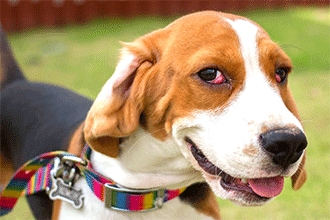
Dogs have a third eyelid, called a nictitating membrane. There is a small gland on the back of the third eyelid that is held in place by a ligament. If the ligament tears, the gland will protrude, quickly becoming swollen and inflamed and turning a bright, angry red.
This condition is commonly called “cherry eye.” It’s not particularly painful, but some dogs may try to rub the area if it’s itchy, and that can cause some discomfort. If you think your dog has cherry eye, you should see a veterinarian.
Treatment for cherry eye typically requires surgery to replace or remove the gland.
Entropion
Entropion is an inherited condition often seen in chow chows, shar-peis and other breeds with excessive facial skin (though it can be seen in any breed). Dogs with entropion have “inverted” eyelids. The lids are rolled inward so that the eyelashes and even the hair rub against the cornea, causing almost constant pain. There is usually a thick green discharge and the dog has difficulty opening its eyes.
This condition can only be resolved by a simple surgical procedure.
Ectropion

Breeds with looser skin can also be prone to eye discharge because of the way their eyelids are formed. Dogs with ectropion have eyelids turned outward, which prevents the eyes from closing completely when the dog blinks. This causes the conjunctiva to dry out and become inflamed. Breeds that may experience this condition include:
- Cocker spaniels
- Saint Bernards
- Bloodhounds
- Beagles
- Mastiffs, especially Neapolitan mastiffs and Dogues de Bordeaux
Other eye conditions in dogs
Dogs can develop cataracts, canine glaucoma, tumors, corneal ulcers and other serious eye conditions that can cause a variety of symptoms, including ocular discharge. Many cases can be difficult to detect at home and require professional diagnosis.
Additionally, if unexplained eye discharge is accompanied by constant itching, redness, swelling or other notable issues, contact a veterinarian promptly for diagnosis and treatment.
SEE RELATED: How good is a dog’s vision?
Risk factors
Some factors can cause certain dogs to be more prone to ocular discharge than others, including the shape of the eyes and eyelids of some breeds. Here are a few other things that can make eye discharge problematic for a dog:
Shallow eye sockets
Some breeds are more susceptible to ocular discharge than others because of their flat faces — the flatter the face, the more shallow the eye sockets are likely to be. Dog breeds that may experience more eye discharge because of this include:
- Boston terriers
- Boxers
- Bulldogs
- Pugs
- Pekingese
- French bulldogs
Allergies
Dogs with severe allergies are more likely to experience eye irritation and discharge when seasonal allergens are at their worst, along with itchiness, skin infections and ear infections. While any dog can suffer from allergies, according to the Merck Veterinary Manual, some breeds are more prone to airborne allergies than others, including:
- Shar-peis
- Wirehaired fox terriers
- Golden retrievers
- Dalmatians
- Boxers
- Boston terriers
Treatment
Depending on the cause, treatment for a dog's eye discharge may consist of home remedies, antibiotic ointments or eye drops, or even surgery. Consult your veterinarian to find out what's best for your dog.
Home treatment for eye discharge in dogs
Clean your dog’s eyes as needed with a damp paper towel or washcloth to remove normal watery discharge or crusts that may have built up overnight. Some ointments, saline eye drops and eye wipes can be found at pet stores to help keep the area clean.
Trimming the fur around your dog’s eyes may also help with irritation. For example, some breeds, such as Yorkshire terriers (Yorkies), have facial hair that often protrudes onto the surface of the eye, causing irritation, introducing dirt and dust, and wicking tears away from the eye. Keeping that facial hair groomed can help avoid that.
An over-the-counter antihistamine such as Benadryl may also help your dog with allergy-related eye watering, but be sure to check with your veterinarian before administering any medication.
Medical treatment for canine ocular discharge
Consult a veterinarian for your dog’s ocular discharge if symptoms linger for longer than two or three days, if symptoms worsen or if additional symptoms develop. Eye problems in dogs can worsen very quickly, which can lead to severe damage to the eye and even loss of sight. A veterinarian may prescribe medical treatment such as an antibiotic, special ointment or eye drops to help treat the discharge.
For more severe cases or cases that develop due to a major underlying cause, your veterinarian may recommend surgery or another procedure. Conditions where surgery may be recommended include tumor, cherry eye and other various problems disrupting the function of the dog’s eye or eyelid.
SEE RELATED: Eye discharge in cats
